Learn how to make a DIY floor cloth using linoleum and your favorite fabrics. A perfectly unique alternative to a standard rug!
Skills Required: Beginner. Even newbie crafters can do this project. Lots of cutting and Mod Podging, but it’s pretty easy.
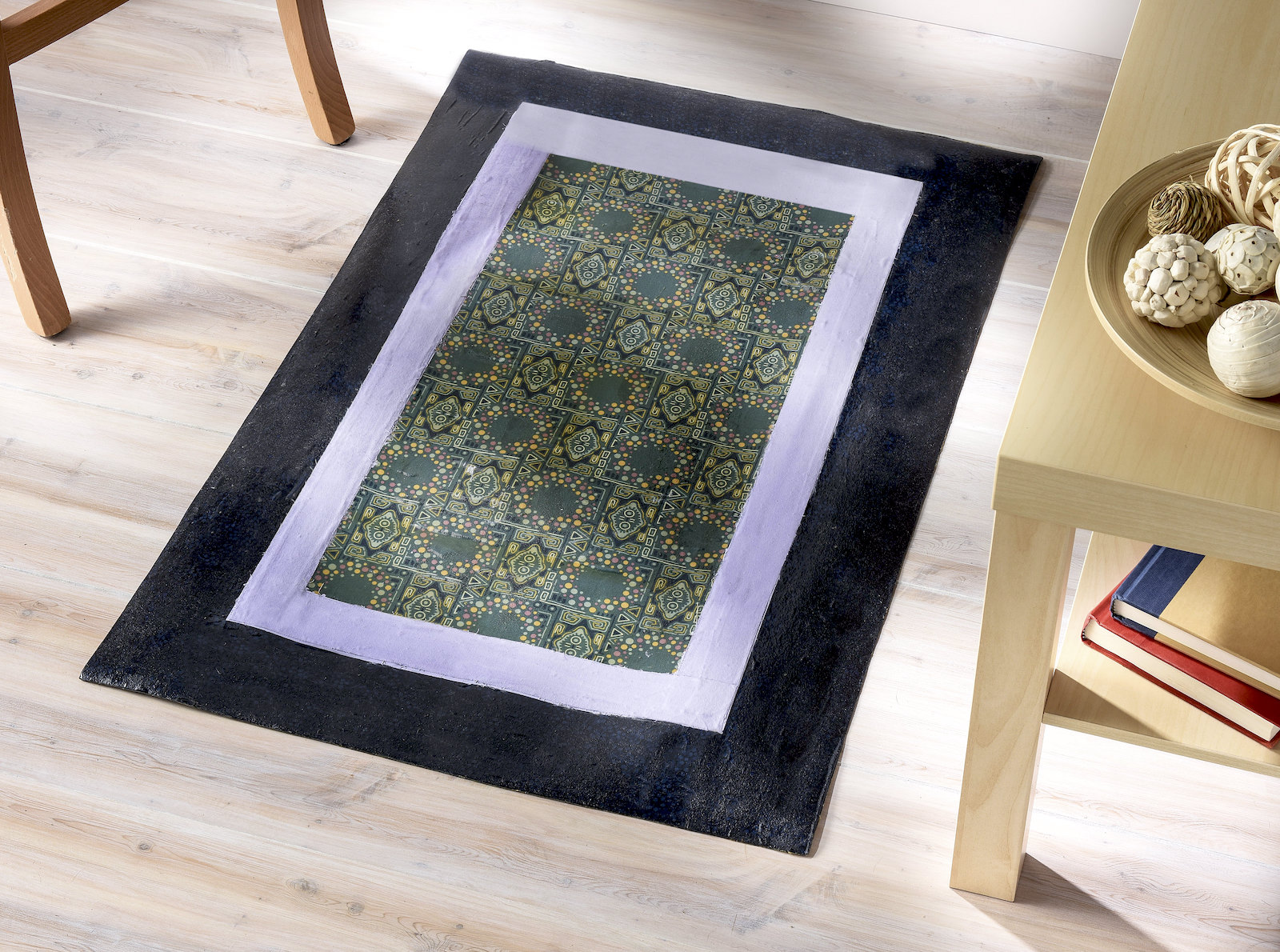
I cannot believe that it’s taken me a year to post this project – but it’s the truth! Here’s what happened . . . reader Georgia e-mailed me about her awesome floor cloths last August, and I loved her style so much that I asked her to make me one.
And because I always think about home decor tutorials for you, I also asked her to photograph the process. Georgia, being the completely wonderful and willing participant that she is, did just that.
She captured the process of this fabric craft, AND sent me the floor cloth.
So what took so long to get the floor cloth posted on the blog? Well, I moved into my studio last year and brought the floor cloth along for the ride . . . I packed everything into a second room in the studio and it took me THIS long to go through everything and photograph the floor cloth.
Yep, it was stuck in the back and I couldn’t find it. But now I’m proud to say it’s been out and displayed for several months, and I’ve gotten lots of compliments from guests who have visited and noticed it!
All I need now is Georgia’s forgiveness for taking so long. I am excited to share her beautiful work and hope you can appreciate it too.
Gather These Supplies
- Linoleum or heavy canvas
- Fabric in three patterns – enough to cover the linoleum
- Mod Podge Matte
- Minwax Polycrylic
- Scissors
- Pencil
- Ruler
- Paintbrush or foam brush
- Box cutter
- Rotary cutter (optional)
- Cutting mat (optional)
Tips for This Project
This is regular, standard issue linoleum: the kind that covers a kitchen floor. You’re going to use the back of it. Turns out the top is perfect for putting on the floor, while the back is perfect for decoupage!
Typical kitchen rugs are 2′ x 3′ or 4′ x 6′ – but you can make this any size you like. There are no limits, so make it work for your space. This one is 2′ x 3′.
Several people have asked if a piece of canvas would work and the answer is – yes! Thick canvas is very similar to linoleum. At least, it’s similar enough and is a fine substitute in this project.
Typically you’ll use three patterns of fabric that work together. I told Georgia that I love blues, so she was kind enough to pick some beautiful fabrics that I would love!
The design you make on the vinyl is up to you. Stripes seem to work quite well.
Using the polyurethane method in this project will allow the floor cloth to be impervious to wet, muddy shoes for years (another tip from Georgia).
After your final fabric is decoupaged (before the poly) you can also get a little creative and add some hand painted designs just to make things a little bit more fun! Some crafters like to add little painted accents like flowers, scrollwork, etc.
You can paint right on top of the Mod Podge and then poly over it. Make sure to use acrylic paint and not latex paint.
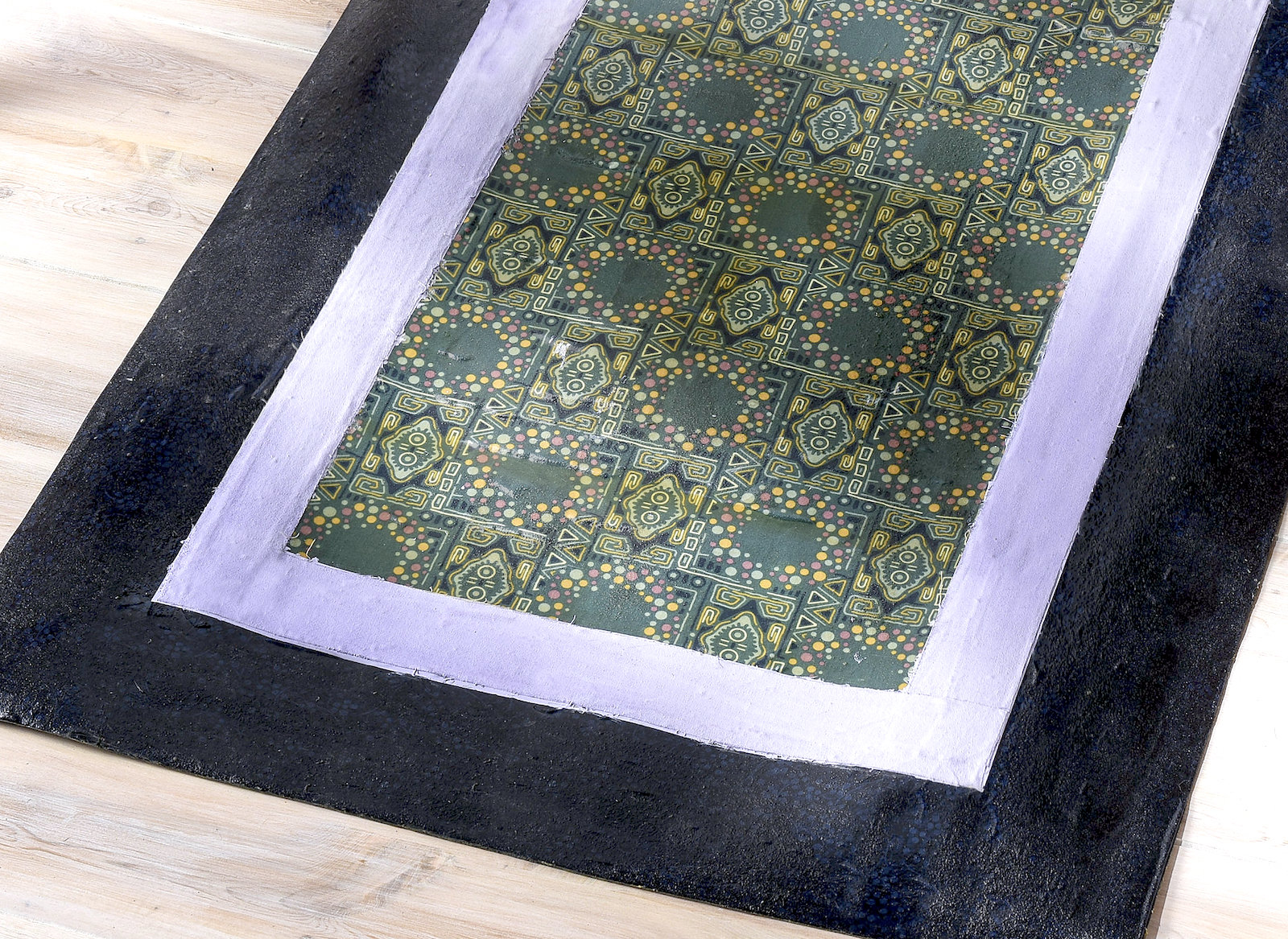
And there you have it – customized just for me! I absolutely love it.

Thank you Georgia! Your project turned out amazing. Get the how to card below.
DIY Floor Cloth
Equipment
- Ruler or tape measure
- Box cutter
- Rotary cutter (optional)
- Cutting mat
Materials
- Linoleum
- Fabric in three patterns
- Mod Podge Matte
- Minwax Polycrylic
Instructions
- Cut the canvas or linoleum to the desired size using a box cutter.
- Choose the fabric you want to use – I selected three patterns. Cut down to a smaller size just larger than the areas they'll go on.
- Mark out where you want to fabrics to go onto the linoleum using a ruler and pencil.
- Trim the fabric to fit the designs you have created. I find a rotary wheel and ruler are quite helpful, but you can also just use scissors.
- Mod Podge your first fabric onto the linoleum. You'll do this by applying a layer of Mod Podge down with a brush, smoothing down the fabric, and letting the layer dry completely.
- Decoupage the next fabric on your floor cloth. Let dry.
- To finish, Mod Podge the final fabric. Wrap this one over the edges to the back. Let dry.
- Seal fully by adding polyurethane. Do this four times, allowing to dry between each coat.
- Let dry overnight before using. Wipe with a clean, damp cloth to remove dirt.
Now I’m curious – what colors would you use for your floor mat? If you enjoyed this project, I’d also love for you to check out these other ideas:


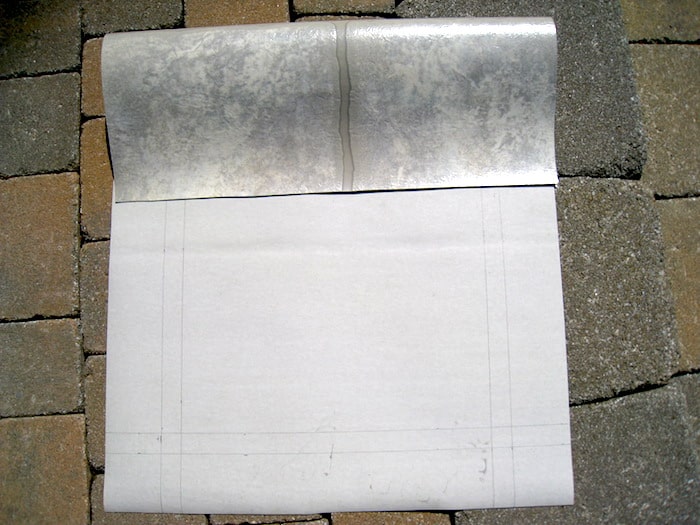
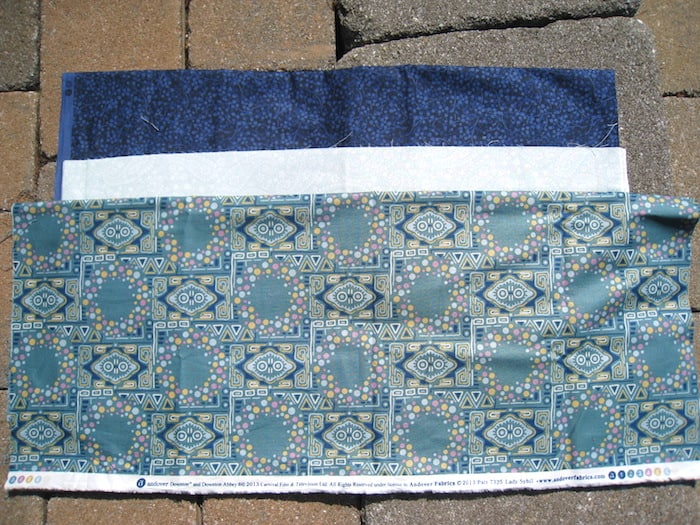
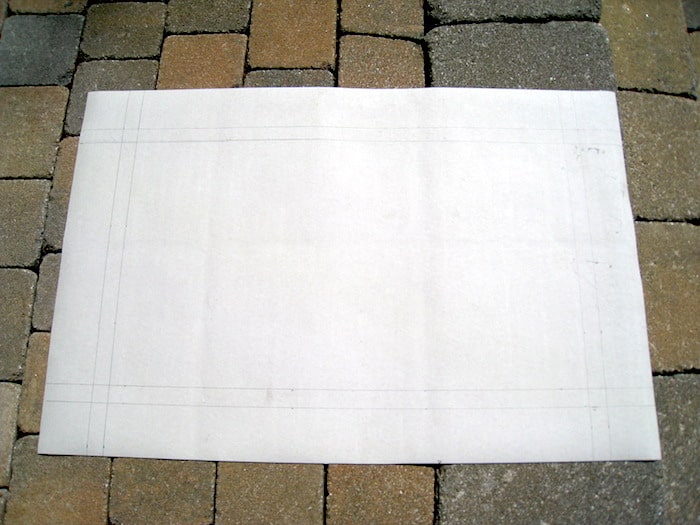
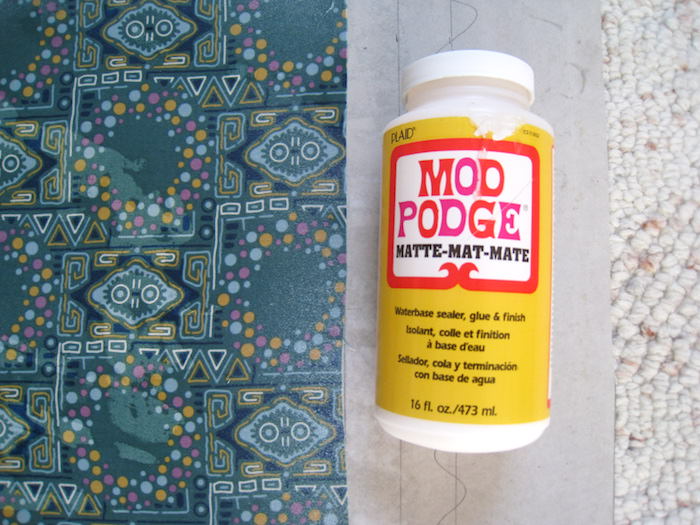
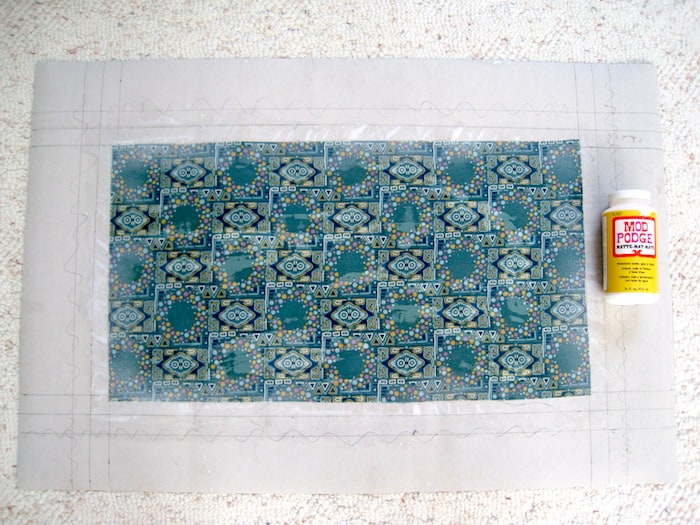
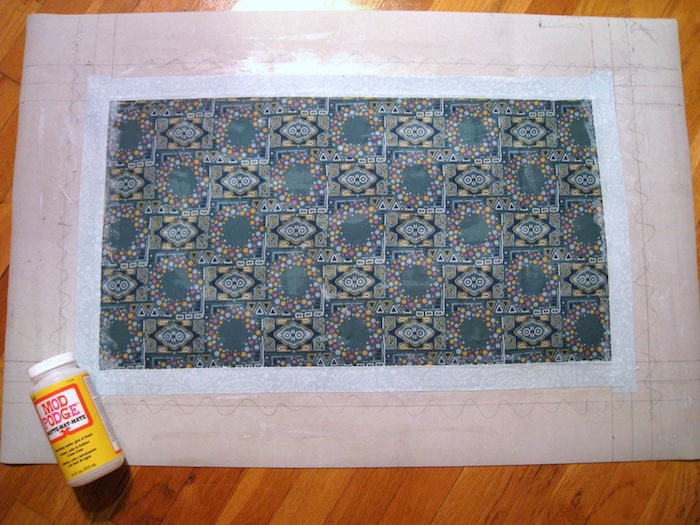
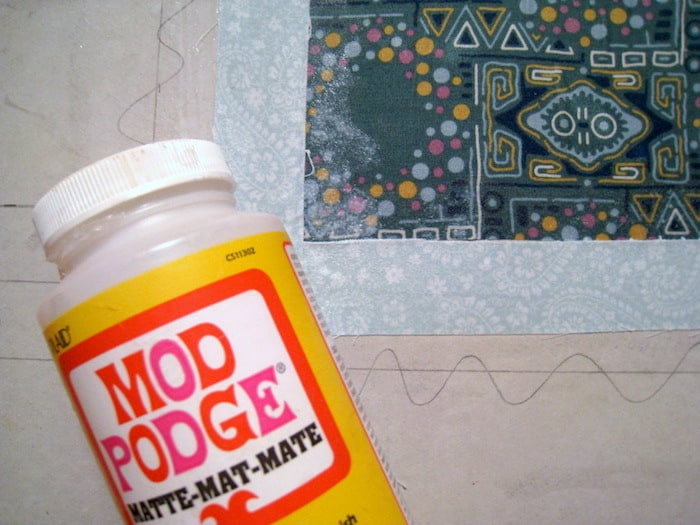
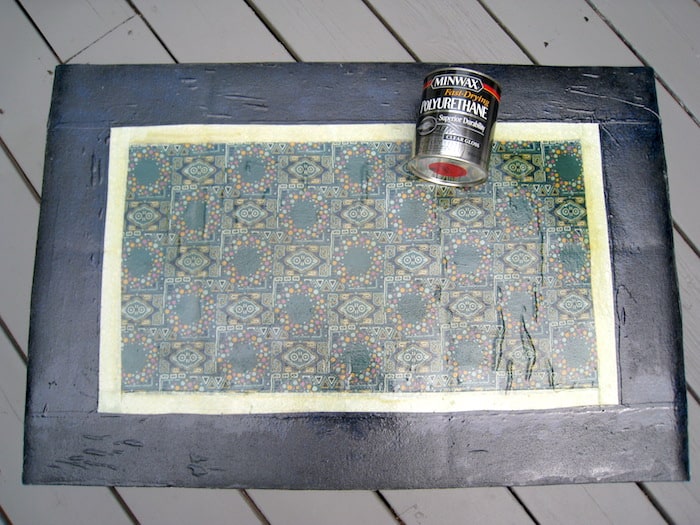

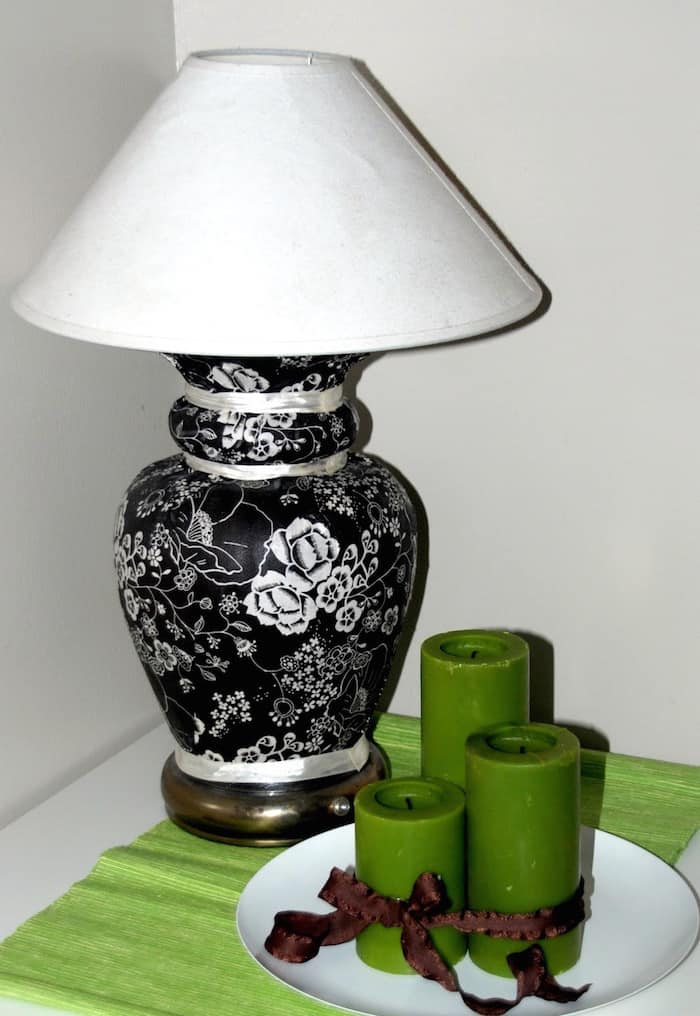


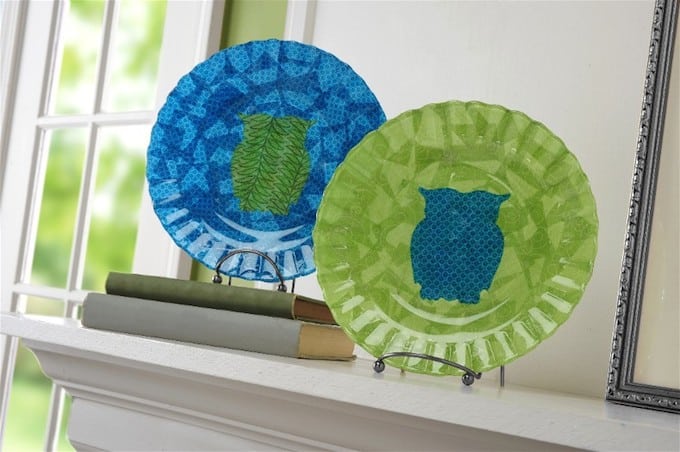

I had fallen in love with the painted floor cloths from linoleum, but now that I’ve seen these made from fabric, I’m hooked even more. Thank you for the tutorial and please give my thanks to Georgia for the incredible fabric choices and design. Maybe I’ll send you a picture when I get mine finished.
WOW.. This is awesome! great idea 🙂
Do you mod podge the entire fabric or just the edges?
The entire thing 😀
Really cute. Love this idea. You might want to clarify whether you mean “linoleum” or “vinyl floor covering.” Linoleum was invented around 1855 and is made of natural materials. Vinyl floor covering is made of PVC and is obviously a more recent invention. The word linoleum is often used generically to mean vinyl floor covering, but it might be confusing to someone who knows the difference if you ask for it at the store. I’m guessing you mean vinyl, which is less expensive. You probably wouldn’t want to cover linoleum with something else.
I was just about to tell you about “linoleum” when I happened to notice CMT’s comments.
I just retired from a company after 30 years of employment. We sold all kinds of flooring materials, including linoleum and vinyl floor covering. CMT is correct about the differences linoleum and vinyl floor covering.
Shopper’s don’t usually just walk into a flooring store or flooring department and see linoleum nowadays.
You definitely want to use a vinyl for your project, and preferably one of the styles that does not have a “paper-type” backing.
Hey – I’m that floor cloth maker. I didn’t think that you remembered to feature my floor cloth on your site and it makes me so happy that you like it. To address CMT’s concern – you can use either linoleum or vinyl. I use whatever I can get for FREE. Usually I use scraps from my local flooring store. They are very happy to give pieces away since they are taking up room in their shop. This craft is easy, fun to do with your left over quilting material, inexpensive fabric that you can find in your local sewing store (think Joann’s here), even an old sheet that has a pretty design on it. Once you ModPodge the fabric down, ModPodge one or two borders on it, and polyurethane the floor cloth 3 or 4 times you will have something very spiffy. Something that I didn’t include in my original tutorial — wrap the last border around to the back about 2 inches. That way the fabric would fray at the perimeter. Then polyurethane the back fabric too. Happy Making. Georgia
Great project! Do you finish the edges of the fabric pieces, and if so, how?
Can these be put on carpet or would that slide too much?
I have modpodged aall the fabric down… Still have to turn over the edges when the top is dry… But the linoleum seems to be curling up on the edges… What to do about that?
This is beautiful. I was thinking this would also be a great way to make placemats and mug rugs!
Thanks for the great idea! I had a really ugly but comfy/squishy mat for standing on when I cook – so I covered it with some day of the dead sugar skulls. It’s fabulous!
@Rutabaga, What a great idea! I have a squishy mat also that has torn on the edges. I am going to glue them together and do the same with some cloth. With this though I think I should use some semi tough cloth rather than something that is lightweight.
This really is gorgeous. It would be a great way to upcycle a piece of lino too. Just flip it over give it a good clean and make the back beautiful.
Do you have to wash the fabric first?
You don’t have to but it can help with discoloration from sizing or other chemicals on the fabric. Just don’t use fabric softener when you dry it!
I made a comment about a squishy mat for my kitchen. I am going to do that. It will be of the same color as my dinner plate design. For my front door I will probably do something that coordinates with my walls which are a light teal color one with a greener tone and one with a bluer tone. Black and a pink or mauve would look great there. May have to send a photo to update what I have done.